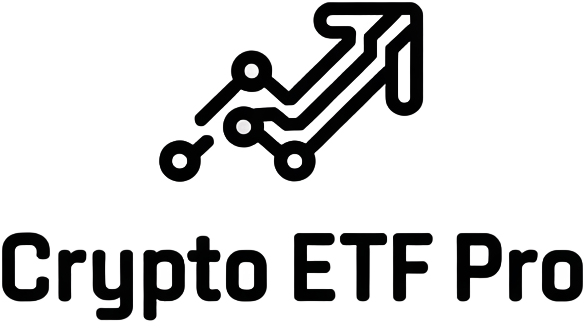
Ethereum’s transition from a purely on-chain asset to a centerpiece of institutional portfolios reached a new milestone in 2024. The U. S. debut of spot Ethereum ETFs in July marked a structural shift, not only in how investors access ETH, but also in the very fabric of on-chain liquidity. With Ethereum trading at $3,874.96 as of November 2,2025, the aftershocks of this ETF revolution are reshaping both market dynamics and investor psychology.
Institutional Inflows and the New Supply Squeeze
Within just eleven months, U. S. -listed spot Ethereum ETFs attracted over $4 billion in net inflows. This tidal wave of capital was more than just headline fodder – it had immediate consequences for on-chain liquidity. Unlike direct ETH purchases, ETF issuers warehouse large amounts of Ethereum off the open market to back shares. As a result, substantial volumes of ETH are effectively sequestered within ETF custodial structures, thinning out the tradable supply on exchanges and DeFi platforms.
This supply squeeze is not just theoretical. On-chain data throughout late 2024 showed a measurable reduction in circulating ETH available for immediate transactions or collateralization. Liquidity pools tightened, spreads widened during volatile periods, and price volatility became more pronounced as fewer coins were available for arbitrage or liquidation events.
Comparing Ethereum ETFs to Their Bitcoin Counterparts
The playbook for spot crypto ETFs was written by Bitcoin earlier in the decade – but Ethereum’s experience has been distinct. While both assets saw massive inflows post-ETF approval, Ethereum’s lower float and higher utility (via DeFi and staking) amplified the impact of ETF-driven supply absorption. In fact, correlation studies throughout 2024 indicated that ETH prices became even more tightly coupled with ETF flows than BTC did after its own ETF debut.
However, there is one critical difference: staking. Unlike physical holders who can stake their ETH for yield and network security rewards, most spot ETFs do not participate in staking protocols due to regulatory ambiguity and custodial limitations. This means that while over $4 billion worth of ETH sits idle backing ETF shares, it does not contribute to network security or generate staking yield for investors – a point that has become central to debates about optimal investment strategies in the era of crypto ETFs.
Investor Behavior: Rotation or Reversal?
The initial surge into spot Ethereum ETFs coincided with a cooling period for direct U. S. -based demand as measured by exchange inflows and DeFi activity. Some interpreted this as waning interest; others saw it as a natural rotation from self-custody to regulated products favored by institutions and retirement accounts. The distinction matters: if this is merely rotation – not reversal – then underlying demand for ETH remains robust but is now channeled through new vehicles with different implications for on-chain liquidity.
This dynamic has also prompted sophisticated investors to weigh the trade-offs between holding staked ETH directly (with all its yield benefits) versus opting for the simplicity and regulatory clarity of an ETF wrapper. The debate continues as both retail and institutional players recalibrate their strategies amid these macro shifts.
Ethereum Price Prediction Table (2026-2031): Impact of Spot ETF Inflows & On-Chain Dynamics
Forecast scenarios based on continued ETF inflows vs. renewed direct demand; all prices in USD. Baseline (Nov 2025): $3,874.96.
| Year | Minimum Price (Bearish Scenario) | Average Price | Maximum Price (Bullish Scenario) | Year-on-Year Change (Avg) | Market Scenario Insights |
|---|---|---|---|---|---|
| 2026 | $3,200 | $4,200 | $5,500 | +8% | ETF inflows steady but slower; liquidity remains tight, volatility elevated |
| 2027 | $3,600 | $5,100 | $7,000 | +21% | Potential ETH ETF expansion in Asia/Europe; DeFi growth resumes |
| 2028 | $4,100 | $6,000 | $8,800 | +18% | On-chain demand increases, possible ETH staking in ETFs debated |
| 2029 | $4,700 | $7,200 | $10,500 | +20% | Regulatory clarity improves; L2 scaling and institutional DeFi adoption |
| 2030 | $5,300 | $8,300 | $12,800 | +15% | ETH 3.0 upgrade rumors; mainstream tokenization, ETF AUM peaks |
| 2031 | $6,000 | $9,500 | $15,000 | +14% | Broader TradFi integration, ETH utility broadens, competition heats up |
Price Prediction Summary
Ethereum is forecast to experience steady price appreciation through 2031, driven by continued institutional inflows via spot ETFs, expansion of DeFi and real-world use cases, and periodic market cycles. Minimum price scenarios reflect potential bearish macro/regulatory shocks, while maximum scenarios reflect strong adoption, ETF growth, and network upgrades. Average annual price growth is projected at 14-21%, outpacing inflation and many traditional assets, but with significant volatility between bullish and bearish extremes.
Key Factors Affecting Ethereum Price
- Sustained institutional inflows into spot Ethereum ETFs and possible global ETF launches
- On-chain liquidity constraints due to ETF holdings reducing circulating supply
- Potential for ETF products to eventually include staking, boosting yield and demand
- Technological upgrades (e.g., scaling, ETH 3.0, L2 adoption) driving new use cases and network value
- Regulatory clarity in major jurisdictions (US, EU, Asia)
- Competition from other smart contract platforms (e.g., Solana, Avalanche)
- Macro factors: global monetary policy, risk appetite, and crypto market cycles
Disclaimer: Cryptocurrency price predictions are speculative and based on current market analysis.
Actual prices may vary significantly due to market volatility, regulatory changes, and other factors.
Always do your own research before making investment decisions.
As the ETF narrative matures, the very definition of Ethereum market liquidity is being rewritten. The influx of ETF capital has not just absorbed available ETH but has also altered how price discovery unfolds. With fewer coins circulating on exchanges and DeFi protocols, even minor shifts in sentiment or macro flows can trigger outsized moves in Ethereum’s price, currently at $3,874.96. This new regime rewards nimble traders while challenging market makers and arbitrageurs to adapt to thinner books and more abrupt volatility clusters.

Yet the story is not one-sided. While spot ETFs have temporarily siphoned liquidity from decentralized venues, they have also broadened access to Ethereum for a vast cohort of investors previously sidelined by technical barriers or regulatory hurdles. This democratization is accelerating mainstream adoption – a trend that could ultimately feed back into on-chain activity as new holders seek utility, staking rewards, or participation in emerging Layer 2 solutions.
The Staking Dilemma: Yield Versus Simplicity
The absence of staking functionality within most ETF structures remains a double-edged sword. On one hand, it preserves simplicity and regulatory compliance for traditional asset managers; on the other, it leaves billions in idle ETH that could otherwise be securing the network and generating yield. For long-term Ethereum bulls, this creates an intriguing dichotomy: ETFs are convenient entry points but may underperform direct staked holdings over a full cycle due to missed compounding rewards.
This tension is shaping product innovation as asset managers explore hybrid models that might one day blend regulated exposure with staking-derived yield. Until then, investors face a strategic choice – prioritize liquidity and compliance via ETFs or chase higher returns through direct staking and self-custody.
Should Ethereum spot ETFs offer staking rewards to better align with on-chain investor incentives?
Since their July 2024 launch, U.S. spot Ethereum ETFs have attracted over $4 billion in net inflows, impacting both on-chain liquidity and staking dynamics. Currently, these ETFs do not offer staking rewards, unlike holding ETH directly, which may affect network security and investor yields. What do you think?
Macro Perspective: What’s Next for On-Chain Liquidity?
The broader implications of Ethereum spot ETFs are still playing out. The initial supply squeeze may moderate as inflows stabilize or as new ETF products evolve to unlock staked ETH potential. Meanwhile, global regulatory developments will dictate how freely capital can move between ETF wrappers and on-chain venues – a dynamic closely watched by both Wall Street and Web3 natives.
Ultimately, the integration of Ethereum into institutional portfolios via spot ETFs marks both an inflection point and a set of new challenges for digital asset markets. As we track Ethereum’s price at $3,874.96, investors should recognize that every new wave of adoption reshapes liquidity in unexpected ways – tightening some channels while opening others.
Markets are stories, read between the lines. The next chapter for Ethereum’s liquidity will be written by how quickly traditional finance adapts to decentralized realities, and vice versa.






